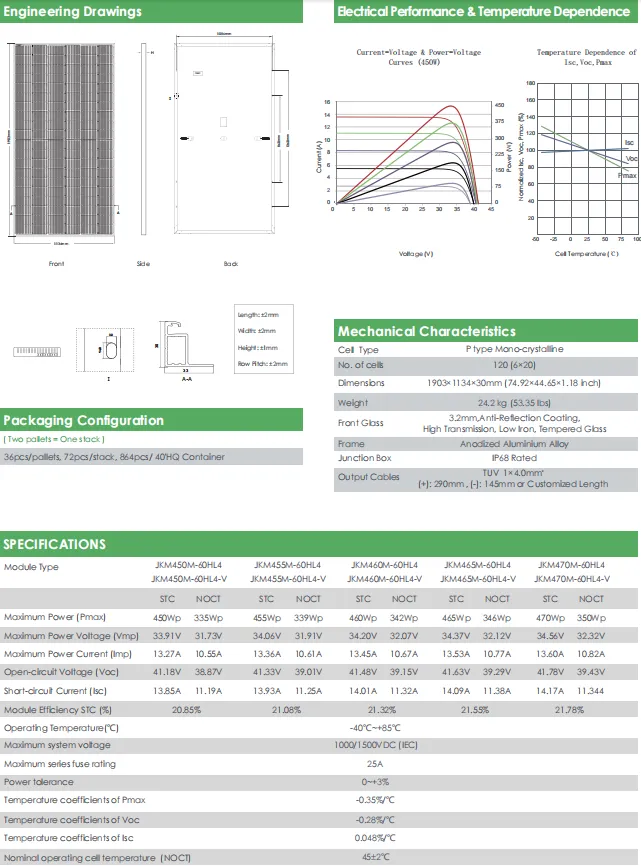Standard Dimensions and Specifications of Solar Panels for Optimal Efficiency
Understanding Standard Solar Panel Size
As renewable energy sources continue to gain popularity, solar energy stands out as one of the most accessible and effective solutions for harnessing clean power. For homeowners and businesses considering solar energy installation, understanding the components involved, especially the size of solar panels, becomes crucial. This article will delve into the standard size of solar panels, its implications for energy production, and how it can influence the overall solar installation process.
What is the Standard Size of Solar Panels?
The typical dimensions of a solar panel vary slightly based on the manufacturer and panel type, but the most common size for residential solar panels is about 65 inches by 39 inches, or approximately 1.6 meters by 1 meter. This standard-size panel generally has a power output ranging from 250 to 400 watts. Most manufacturers produce panels that fit within this range, making it easier for solar installers to design systems that maximize roof space and energy efficiency.
The thickness of a solar panel also plays a role in its overall performance, with standard panels typically ranging from 1.5 to 2 inches in thickness. Notably, the construction material used (often crystalline silicon) can affect both the weight and efficiency of the panels. Smaller and more compact solar panels are available for special applications, but the standard size remains the most common for residential and commercial use.
Importance of Understanding Solar Panel Size
Knowing the size of solar panels is essential for several reasons
1. Space Requirements The larger the solar panel system, the more space is needed. For homeowners wishing to install solar panels on rooftops, understanding the dimensions helps in determining how many panels can fit and how much space should be allocated. Depending on the energy needs—calculated in kilowatt-hours (kWh)—homeowners may need between 20 to 40 panels installed on their roofs, influencing the total installation area required.
standard solar panel size

2. Energy Production Solar panel size directly impacts energy production. Larger panels with higher wattage output can produce more electricity in the same amount of space compared to smaller panels. For instance, if a household’s energy requirements demand a system size of 8 kW, knowing the wattage of the selected panels informs how many will need to be installed.
3. Cost Analysis Solar panels are typically sold by wattage; thus, knowing the standard size and output allows consumers to perform a cost-benefit analysis. While larger panels may cost more upfront, they can provide better value over time by producing more energy and reducing electricity bills more effectively.
4. Aesthetic Considerations For many homeowners, the look of their solar panel installation matters. Understanding the standard size helps design a system that meets aesthetic preferences while maximizing energy production. Some may opt for fewer, larger panels for a sleeker look, while others may prefer a greater number of smaller panels.
Future Trends in Solar Panel Sizes
As technology continues to develop, the solar industry sees innovations leading to efficiency improvements and new panel sizes. Bifacial solar panels, which capture sunlight from both sides, often have a similar surface area to standard panels but can generate additional energy due to their design. Moreover, advancements in thin-film technology promise lower weight and flexibility, allowing better integration into various building designs without compromising functionality.
Conclusion
Understanding the standard size of solar panels is a foundational aspect for anyone considering a solar energy investment. With standard panels measuring around 65 inches by 39 inches and producing between 250 to 400 watts, both homeowners and businesses can make informed decisions about the space, energy production, and costs involved. Embracing solar energy not only contributes to sustainability efforts but also offers significant long-term economic benefits. As technology advances and the market evolves, potential solar users must stay informed about the latest developments to make the best choices for their energy futures.
-
String Solar Inverter: The High-Efficiency Solution for Smart Solar EnergyNewsJul.14,2025
-
Revolutionizing Rooftop Energy with the Power of the Micro Solar InverterNewsJul.14,2025
-
Power Independence with Smart Off Grid Solar Inverter SolutionsNewsJul.14,2025
-
On Grid Solar Inverter: Powering the Future with Smart Grid IntegrationNewsJul.14,2025
-
Monocrystalline Solar Panels: High-Efficiency Power for the Future of Clean EnergyNewsJul.14,2025
-
Bifacial Solar Panel: A Smarter Investment for Next-Generation Energy SystemsNewsJul.14,2025







